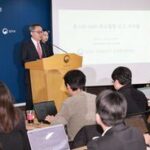
The Japanese government initiated a nationwide investigation for contaminated tap water as Japanese residents are exposed to carcinogens known as per- and poly-fluoroalkyl substances (PFAS).
According to media outlets such as Sankei Shimbun, the Japanese government requested water providers to assess the level of contamination last month. Specifically, they asked for the concentration of PFAS detected in tap water, which is expected to be returned by September.
While Japan has included PFAS-related provisions in previous water surveys, this is the first nationwide investigation conducted. PFAS refers to artificial organic fluorine compounds. Due to their repelling properties, they are used in non-stick coatings for kitchen appliances and semiconductor manufacturing. These recently discovered harmful substances do not naturally break down and accumulate in living organisms.
In April, the U.S. Environmental Protection Agency established standards for PFOS (perfluorooctanesulfonic acid) and PFOA (perfluoroalkyl and poly-fluoroalkyl substances), urging countries to monitor their water sources thoroughly. However, Japan was criticized for its lack of response.
Notably, the need for nationwide tap water examination in Japan became critical as contamination incidents grew in various parts of the country over the past few years.
A prime example is the Yoshi Village in Okayama Prefecture, which was revealed last October. In this small village of 1,000 residents, 1,400 nanograms (ng) of PFAS were detected in the tap water, which is 28 times the target value. Japan’s target value is 50ng per liter. Once the report came out, the village was instructed to restrict tap water use. However, by then, many villagers were affected.
The PFAS concentration over 20ng/mL in blood shows adverse impacts on humans according to standards set by the U.S. According to an investigation by NHK, all 27 villagers who underwent blood tests exceeded this level. One woman in her 60s had a remarkably high PFAS concentration of 362.9ng/mL. She was diagnosed with dyslipidemia, a disease associated with PFAS, four years ago and has been undergoing treatment.
The most significant impact residents suffered was miscarriage. Three out of five women in their 30s and 40s in the village reported having miscarriages. A woman who moved from Tokyo 13 years ago had three miscarriages while living there. NHK recognized the association between the concentration of PFAS and miscarriages but denied the causal relationship between the two.
Furthermore, the Japanese Food Safety Commission revealed the association between the concentration of PFAS and miscarriages through 23 recently published papers. Professor Emeritus Akio Koizumi of Kyoto University criticized Japan’s poor PFAS regulations despite being a developed country. He also emphasized the need for valid investigations over time and health surveys for the residents.















Most Commented